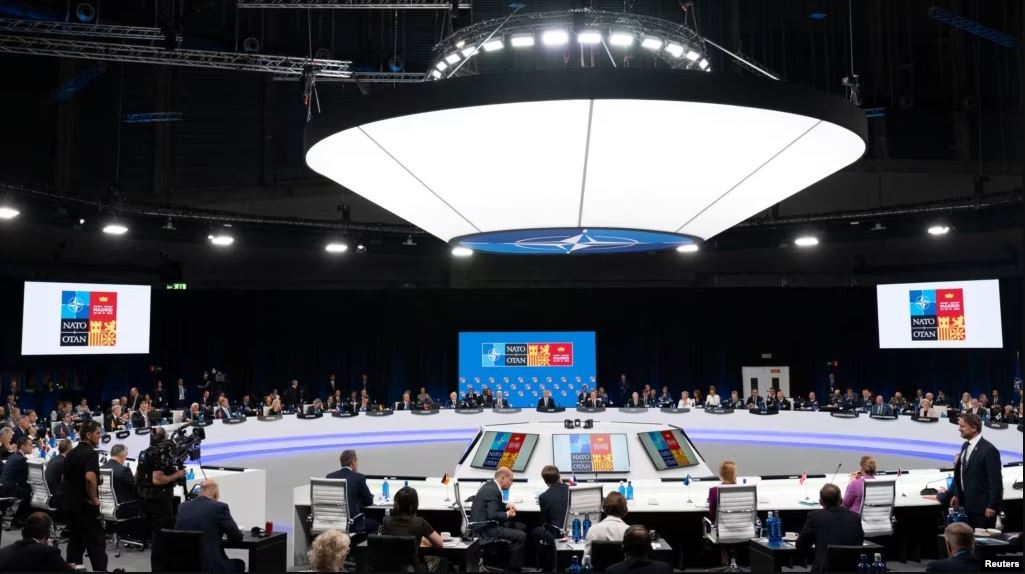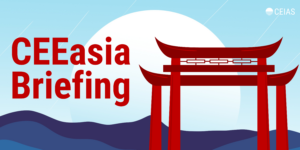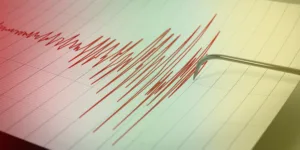The NATO alliance is experiencing its rebirth. The new Strategic Concept adopted during the Madrid summit on 29 June is a response to both Russia’s invasion of Ukraine and broader strategic shifts in the past few years. This document makes it clear that Russia is “the most significant and direct threat” to NATO’s security.
Much has been written about the war in Ukraine providing momentum to the NATO alliance, which, until recently, had struggled with defining its identity in the 21st century. However, what is perhaps even more interesting is NATO’s decision to continue recalibrating its strategy towards the Indo-Pacific in light of China’s growing assertiveness and global ambitions. The region is increasingly recognised as a geopolitical and geo-economic centre of gravity — as evidenced by the participation of the leaders of Australia, Japan, South Korea, and New Zealand in the Madrid summit. With China and Russia now perceived as more united in their interests, NATO has an opportunity to also become more active in this part of the world.
NATO’s evolving view of China
NATO’s position on China has been shifting in recent years and seems to have become bolder than initially expected. In 2019, NATO leaders mentioned the country for the first time in a joint declaration, which described it as presenting “both opportunities and challenges”. Fast forward to 2021, and the Brussels Summit communiqué took an even bolder stance, stating that China presents “systemic challenges to the rules-based international order”. The most recent document — which appears even more wary of Beijing — can be understood as completing NATO’s long-term quest to rethink its own relevance and address how it views China, whose ambitions and “coercive policies”, it says, “challenge [NATO’s] interests, security, and values”.
Why has NATO doubled down on its attention towards China, despite the re-emerging threat from Russia following the war in Ukraine? One could argue that the recent developments might have led the NATO allies to abandon or, at least, rein in their rising focus on the Indo-Pacific — a development which would clearly be in China’s interest.
Why has NATO doubled down on its attention towards China, despite the re-emerging threat from Russia following the war in Ukraine? One could argue that the recent developments might have led the NATO allies to abandon or, at least, rein in their rising focus on the Indo-Pacific — a development which would clearly be in China’s interest. However, given that China’s growing power presents a long-term challenge, abandoning the Indo-Pacific in favour of a much more immediate Russian threat would be detrimental for NATO and its members. China’s backing of Russia’s actions in Ukraine also seems to have backfired on Beijing, as it means NATO allies could not completely lose focus on China.
Since the invasion of Ukraine, discussions around the emerging Sino-Russian bloc have become more frequent. Some now see the two powers as united in their quest to remodel and weaken the Western-led ‘rules-based international order’. In this way, Beijing has tied itself to Russia in a much broader strategic discussion that deals with the transition from a unipolar into a multipolar world, where groups of countries have their respective spheres of influence. This is despite the clear limitations of the Sino-Russian alliance. In reality, the two countries are mainly united by their desire to counter the West, rather than sharing the same ideology. In some areas of the world, such as Central Asia, they actually have competing interests, which are likely to test their relations in the coming years.
China’s anxiety
Adoption of the NATO document was met with vitriol from Beijing. Chinese diplomats accused NATO of having a “Cold War mentality and ideological prejudice” — a mainstay trope in Chinese anti-West propaganda. “Since NATO has positioned China as a ‘systemic challenge’, we have to pay close attention to it and deal with it in a coordinated way. We will resolutely and forcefully fight back against acts that violate our interests,” read a statement from the Chinese mission to the EU. The responses highlight Beijing’s pre-existing anxiety about the US and Europe recognising the Indo-Pacific as the theatre for an ongoing geopolitical clash between an increasingly authoritarian China and the West. The focal point of this growing anxiety is the hypothetical future eastward expansion of NATO, and possibly even membership offers to some of the Indo-Pacific regional powers.
Impact in Europe and beyond
However, even after the statements it made at the Madrid Summit, NATO clearly remains a transatlantic alliance without an expansionist agenda in the Indo-Pacific region. This does not mean, though, that NATO should remain blind to the developments occurring in the region, which can have a clear impact on NATO members on both sides of the Atlantic. Currently, the clearest manifestation of this impact would be China’s support of Russia in its military adventurism, despite proclaimed adherence to norms of non-interference and pacifism. However, the impacts go beyond that. China has been increasingly active in deploying tools of hybrid warfare in Europe (at least since the 2019 Hong Kong protests), and further amplifying these efforts in light of the COVID-19 pandemic and Russian aggression against Ukraine.
Potential challenges posed by China go beyond its activities directly focused on Europe. A military crisis in the Taiwan Strait or the South China Sea would further destabilise the already fragile global trade system. In this scenario, the European states’ ability to mobilise a response to protect their economic interests would be a great advantage for them. Therefore, it is crucial that NATO engages in dialogue with the Indo-Pacific regional powers. Having been exposed to the pressures of growing Chinese assertiveness, countries like Australia and Japan have amassed plenty of experience in how to tackle the associated challenges (as also identified by NATO), from hybrid and cyber operations and the spread of disinformation to abuses of economic dependencies. NATO members, whose exposure to China is mostly a new phenomenon, can learn from this experience.
In the short term, we can expect three main developments. First, there will be increased dialogue and experience sharing between NATO and like-minded partners in the Indo-Pacific, potentially leading to even deeper engagement of the defence industries and greater military interoperability. Second, we can expect a much-needed security policy convergence on China among the NATO members themselves, especially between the EU and the US, who at times find themselves at odds on defining the most suitable response to challenges posed by China. Third, attempts to establish a NATO-China dialogue will be made to “build reciprocal transparency” as an important confidence-building measure. The success of this will be, however, largely dependent on China’s own willingness to engage with NATO — a move complicated by the Chinese Communist Party’s (CCP) domestic considerations, such as rising nationalism and anti-West sentiments, which have so far been actively fostered by the CCP.
DISCLAIMER: All views expressed are those of the writer and do not necessarily represent that of the 9DASHLINE.com platform.
The article was originally published by 9DASHLINE.









